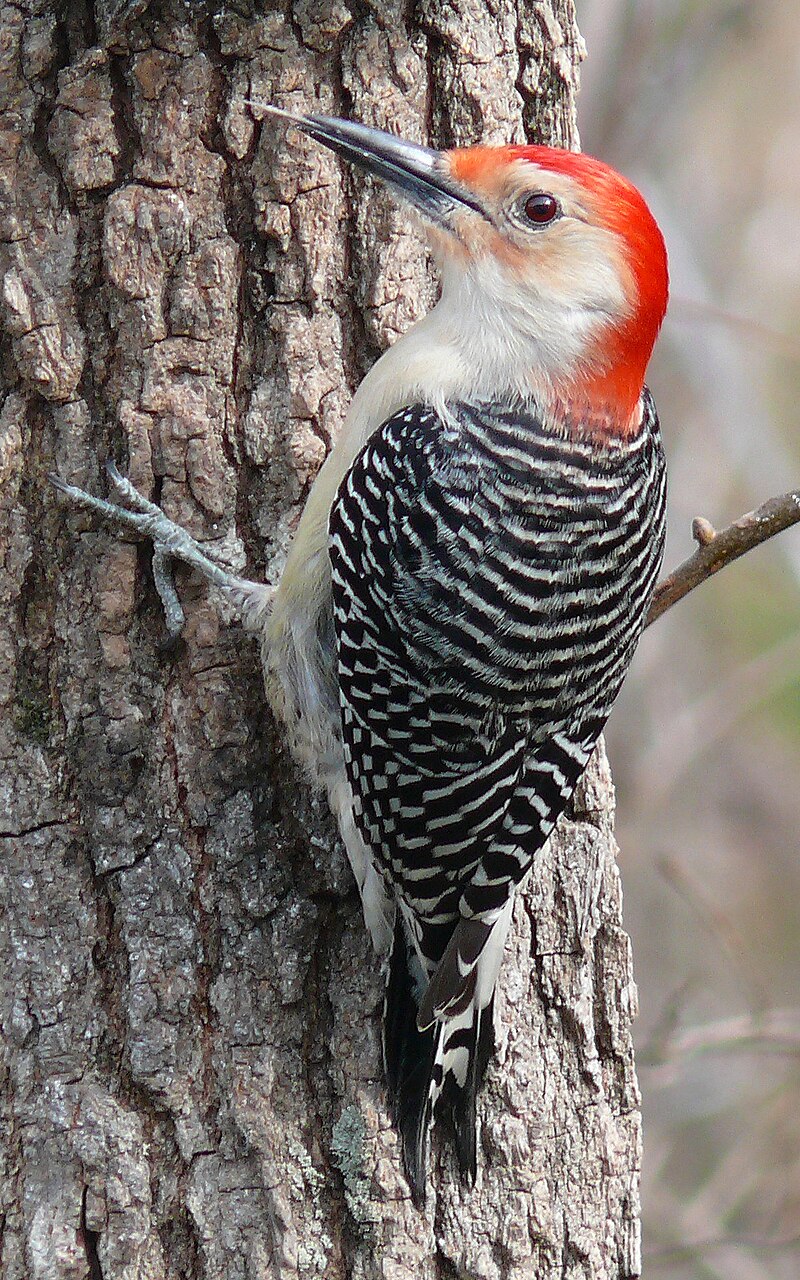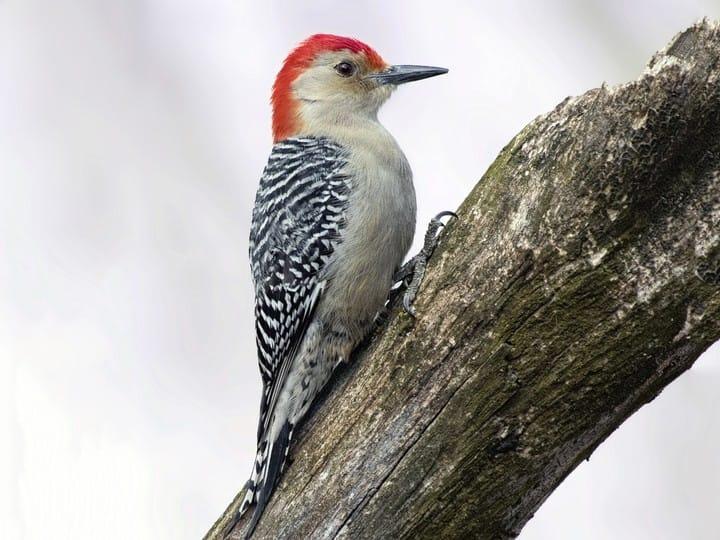Woodpeckers: A Comprehensive Guide to Recognizing These Special Birds
Woodpeckers, with their distinct actions and physical attributes, have actually long astounded the interest of ornithologists and nature lovers alike. From their balanced drumming echoing with the woods to their exceptional adjustments for scaling tree trunks effortlessly, these birds present a remarkable research study in bird biology. What truly sets woodpeckers apart is not simply their striking appearance yet also their vital function in preserving the fragile balance of ecological communities. As we explore the intricate composition, diverse varieties, and ecological importance of woodpeckers, a deeper gratitude for these special birds and the enigmas they hold unfolds.

Woodpeckers' Drumming Behavior
Woodpeckers exhibit a balanced and precise drumming habits that serves different necessary functions in their every day lives. This behavior is primarily associated with interaction, region protection, and foraging. The unique drumming sound is created by the quick pecking of their beaks versus difficult surfaces such as tree trunks, branches, or perhaps steel items.
Communication is a crucial facet of woodpecker habits, and drumming plays a considerable role in this procedure. Woodpeckers utilize drumming to establish their presence, bring in companions, and maintain call with their partners and offspring. The regularity, intensity, and duration of drumming series communicate particular messages to other woodpeckers in the location.
In addition to communication, woodpeckers use drumming behavior for region protection. Woodpeckers in Florida. The loud and recurring drumming acts as a cautioning to potential trespassers, signaling that the location is already claimed. By developing their area through drumming, woodpeckers decrease the likelihood of disputes over important sources such as food and nesting websites
Moreover, woodpeckers additionally use drumming as a foraging strategy. The rhythmic pecking assists them locate bugs hiding underneath the bark of trees by creating resonances that disrupt the victim's camouflage. This behavior showcases the flexibility and resourcefulness of woodpeckers in using their drumming abilities for multiple crucial purposes.
One-of-a-kind Adaptations for Tree Climbing
Having actually understood the art of drumming to connect, defend area, and forage, woodpeckers have actually advanced distinct adaptations that promote their remarkable climbing up abilities in their arboreal environments. One key adaptation is their customized feet. Woodpeckers have zygodactyl feet, with 2 toes pointing ahead and two toes aiming backward. This arrangement provides a strong hold on the vertical surface areas of trees, enabling them to cling easily while foraging for insects or drumming. In addition, woodpeckers have tight tail feathers that serve as a prop to sustain their bodies as they climb. These tail feathers supply security and equilibrium, making it possible for woodpeckers to maneuver up tree trunks with precision and agility.
Moreover, woodpeckers have powerful neck muscle mass and an unique skull structure that aid in their climbing capabilities. Their solid neck muscular tissues permit them to swiftly peck at tree bark without experiencing whiplash, while their thick head and little mind work as shock absorbers, protecting them from the effect of duplicated drumming. These adaptations collectively allow woodpeckers to navigate the vertical world of trees with performance and poise.

Function of Woodpeckers in Ecosystems
Playing an essential duty in forest environments, woodpeckers contribute substantially to the equilibrium and health of their environments through their distinct actions and interactions with various other varieties. One of the key ecological functions of woodpeckers is their function in regulating insect populaces. By foraging for pests under the bark of trees, woodpeckers help regulate insect populaces, protecting against outbreaks that could harm the general wellness of the woodland. Additionally, woodpeckers create tooth cavities in trees that function as crucial nesting sites for a variety of other bird types, advertising biodiversity within the environment.
In addition, the drumming and articulations of woodpeckers play an essential duty in interaction and area establishment. These sounds not just offer to draw in mates but additionally aid define boundaries in between various woodpecker territories, reducing conflicts and advertising a harmonious coexistence within the woodland neighborhood. In general, the presence of woodpeckers in woodland ecological communities highlights their value as keystone types, influencing the characteristics and operating of these habitats in multifaceted means.
Makeup: Specialized Beaks and Feet
In the complex web of woodland environments, the specialized beaks straight from the source and feet of woodpeckers are important adaptations that allow them to meet their crucial eco-friendly roles. Woodpeckers possess one-of-a-kind physiological features that are especially created to assist them in their foraging and nesting behaviors.
One of the most distinguishing characteristic of woodpeckers is their strong, chisel-shaped beaks. These beaks are completely adapted for boring right into wood to discover insects, larvae, and sap concealed under the bark of trees. The strong muscular tissues and durable structure of their beaks enable woodpeckers to eat a rate of approximately 20 times per second without triggering damage to their skulls.
Furthermore, woodpeckers have actually specialized feet that aid in their acrobatic climbing capacities. Their feet have 2 toes pointing ahead and 2 toes directing in reverse, offering a strong page hold on upright surface areas (Woodpeckers in Florida). This unique foot arrangement, together with rigid tail feathers that function as an encouraging prop, enables woodpeckers to hold on to tree trunks and branches effortlessly while they browse for food or dig deep into nesting cavities
Woodpecker Types Variety
What variables contribute to the amazing diversity of woodpecker species across different habitats and regions? Woodpeckers are a diverse group of birds found across various communities worldwide, with over 200 recognized types displaying adaptations to different environments. One key element driving this diversity is the availability of suitable environments. Woodpeckers have progressed to inhabit a variety of settings, from forests and forests to meadows and deserts, each presenting distinct obstacles that have affected the advancement of unique woodpecker species.
One more contributing variable to woodpecker types variety is their specialized feeding habits. Various types have progressed to exploit numerous food sources, such as pests, tree sap, fruits, and nuts, resulting in the growth of particular adjustments in beak shape, dimension, and strength. These adjustments enable woodpeckers to forage successfully in their particular environments, minimizing competitors among varieties and promoting particular niche differentiation. In addition, geographical seclusion and historical variables have contributed in shaping the circulation and diversity of woodpecker types, bring about the large array of specialized adjustments seen in these fascinating birds.

Final Thought
To conclude, woodpeckers are fascinating birds that exhibit one-of-a-kind drumming habits, specialized adaptations for tree climbing, and play important duties in environments. Their composition, consisting of specialized beaks and Continued feet, enables them to flourish in their environment. With a varied variety of woodpecker species discovered worldwide, these birds are vital for maintaining the wellness and balance of forests and forests. Understanding and valuing the complexities of woodpeckers can offer valuable understandings right into the natural globe.